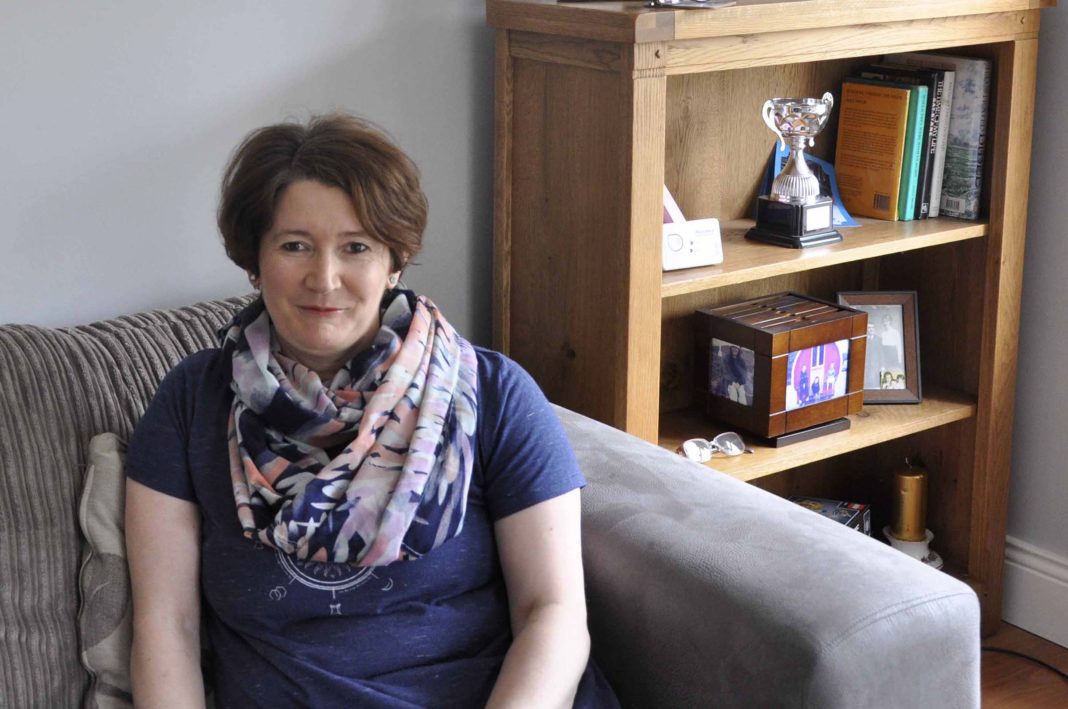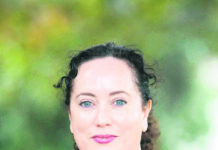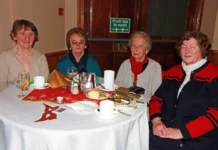A patient advocate for melanoma from Skeheenarinky, Kay Curtin, is warning people to be safe in the sun and to be aware of changes in their own skin. Her words come during Melanoma Awareness month, which runs throughout the month of May.
Like many, Kay did not know much about melanoma until it came into her own home. In the summer of 2004, while living in London, Kay noticed something in the centre of her back, but didn’t take much notice of it and it wasn’t until she was bringing her infant son to the doctor that she thought to mention it in passing.
The mother of three was referred onto the lesion clinic and she discovered that she had malignant melanoma.
“Everything went into meltdown after that, when the doctor said it was melanoma and that the mole was cancerous, it was a big shock,” Kay told The Avondhu.
ALARM BELLS
After she had the mole removed, Kay was on a clinical trial in London for two years and was in good health until January 2015, when she felt extremely unwell, was unable to eat and started losing weight.
She was in quite a lot of pain and had thought that she might have gallstones, but because melanoma is something, which is always in the back of her mind, she said that alarm bells started to ring.
Kay explained that melanoma can stay dormant for many years and for many patients, they are in a watch and wait system, not really knowing if the remission will last or if the cancer will strike again.
When she went to hospital, they found tumours and she started targeted treatment and her last scan in February showed that she is in remission, but now she is undergoing treatment and is back to the watch and wait system.
One of the things which shocked Kay when she first went to the lesion clinic in the UK was that they asked her how many times she had been burned, as someone who has been burned five times in their lifetime has an increased risk of developing melanoma.
SUNBED USE
Speaking about her own experiences, Kay told The Avondhu that she had used sunbeds before her own wedding and before her sister’s wedding, but wasn’t a big user of them.
“They are not safe, full stop,” she stressed, adding that she is shocked by the number of people who still use them, even though the risks are widely known.
Kay added that because Ireland doesn’t have a hot climate, people tend to take advantage of the sun when it comes out, but many do not take precautions about staying safe.
“As soon as the sun comes out, I’m conscious of being careful,” she said.
Melanoma is one of the most aggressive cancers, but it is also one of the most preventable.
By 2040, it is expected that rates of melanoma will have increased by 150% in women and 357% in men in Ireland, but working towards prevention could stunt this dramatic rise.
Kay has been working with www.melanomaireland.ie as a patient advocate, she writes a blog on the website and is due to travel to America for a global conference about new treatments and developments. There are hopes that a national skincare strategy would be established in Ireland.
SIMPLE PRECAUTIONS
In order to protect against melanoma, people should wear sun protection, seek out shade and not expose themselves to the sun when it is at its hottest between 10am and 3pm. Covering up and wearing a wide brimmed hat are also advised.
Kay told The Avondhu that people aged between 15 and 34 are among those who most often get melanoma and she advised people from teenagers up to check their skin on a monthly basis for moles, spots or anything new on the skin, which is changing, getting itchy or bleeding or changing in shape or colour.
As Irish weather is prone to changing quickly, Kay advised keeping sun cream in a handbag or in the car, on reserve.
For more information on how to stay safe in the sun and melanoma, visit www.melanomaireland.ie












